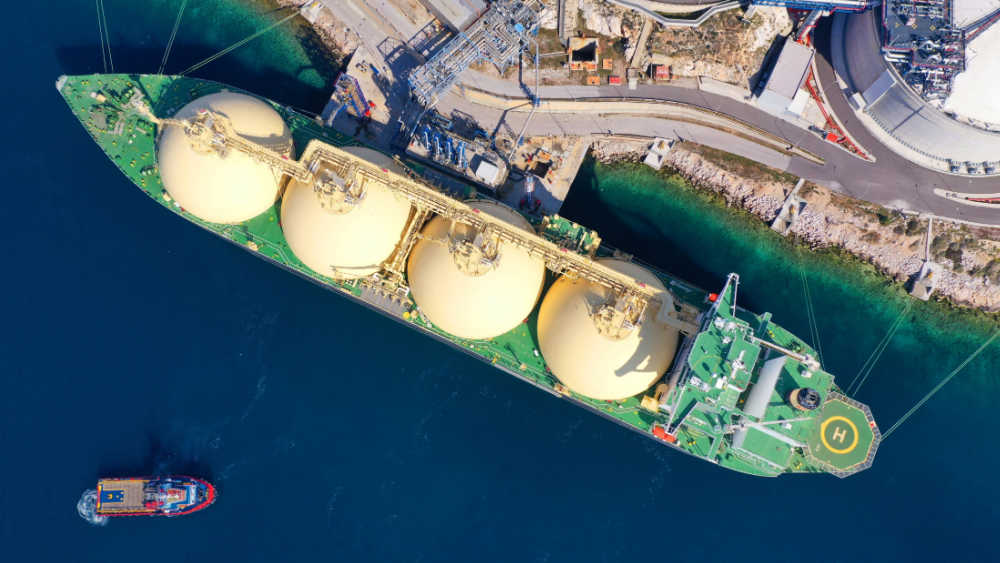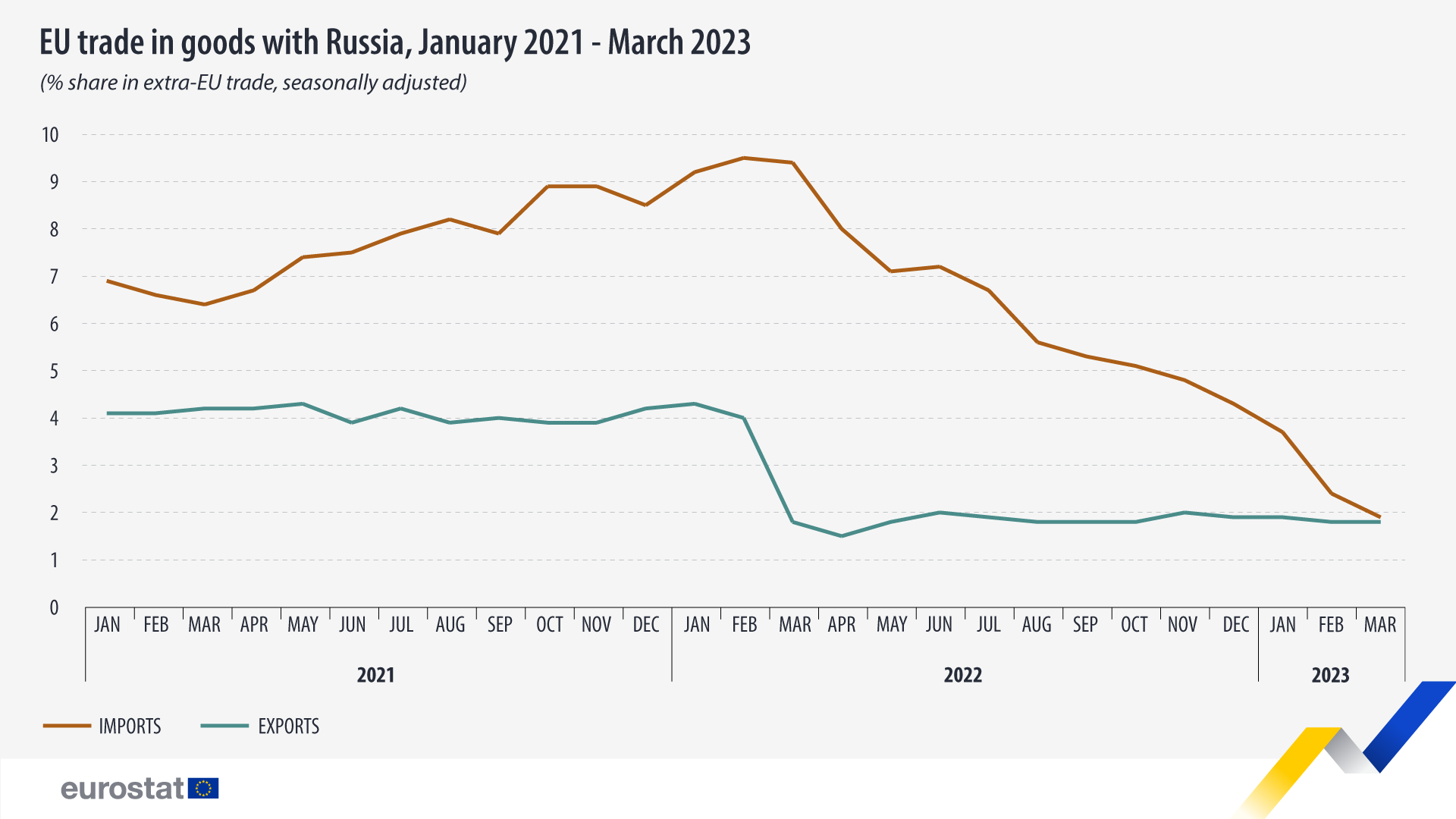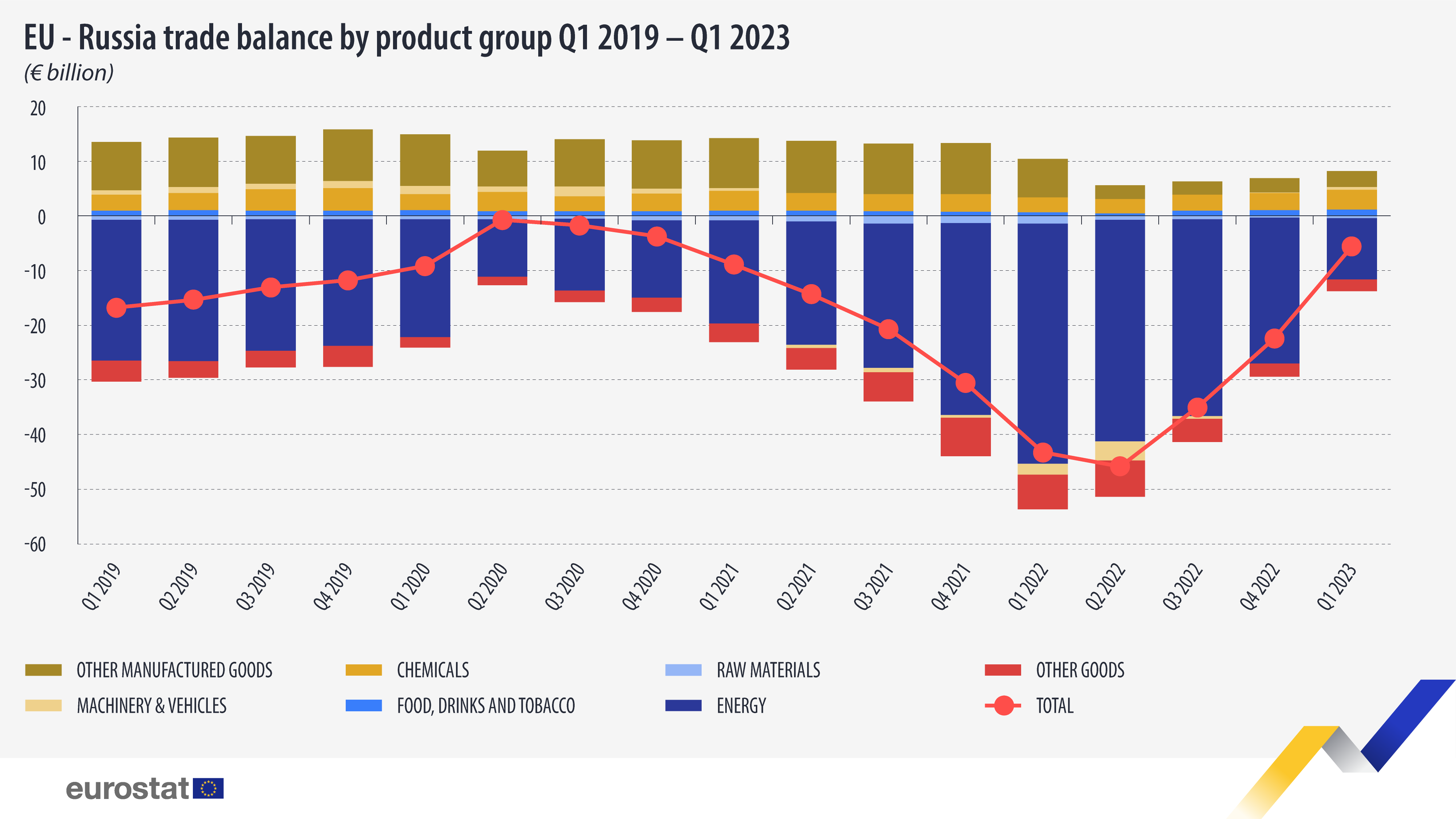EU-Russia trade: from deficit to €0.2 billion surplus

EU trade with Russia has been strongly affected following Russia's invasion of Ukraine, with the EU imposing import and export restrictions on several products.
Considering seasonally adjusted values, both exports and imports dropped below the levels prior to Russia's invasion of Ukraine. Russia’s share in EU’s extra-EU exports fell from 4.0% in February 2022 to 1.8% in March 2023. Over the same period, the share of extra-EU imports from Russia fell from 9.5% to 1.9%.
The EU’s trade deficit with Russia, which peaked at €18.4 billion in March 2022, decreased to €6.1 billion in December 2022 and turned into a small surplus in March 2023 at €0.2 billion. The value of imports from Russia fell from €22.0 billion in March 2022 to €3.8 billion in March 2023, and, in the same period, the value of exports slightly increased from €3.6 billion to €4.0 billion. However, it should be noted that in February 2022 exports had been as high as € 8.0 billion.
Source dataset: ext_st_eu27_2020sitc
The EU's total trade balance with Russia is strongly correlated with the balance for energy products. Soaring prices for energy products in 2021 and 2022 caused a considerable trade deficit. However, import restrictions and falling prices reduced the trade deficit, which stood at €5.6 billion in the first quarter of 2023.
In the first quarter of 2023, the EU-Russia trade balance for energy registered a deficit of €11.3 billion, indicating a substantial difference from the deficit observed in the first quarter of 2022 at €43.9 billion.
Since the first quarter of 2022, the trade balance for chemicals increased by €1.1 billion to €3.7 billion.
Source dataset: ext_st_eu27_2020sitc
For more information
- Statistics Explained article on EU trade with Russia - latest developments
- Thematic section on international trade in goods
- Database on international trade in goods
If you have any queries, please visit our contact us page.


